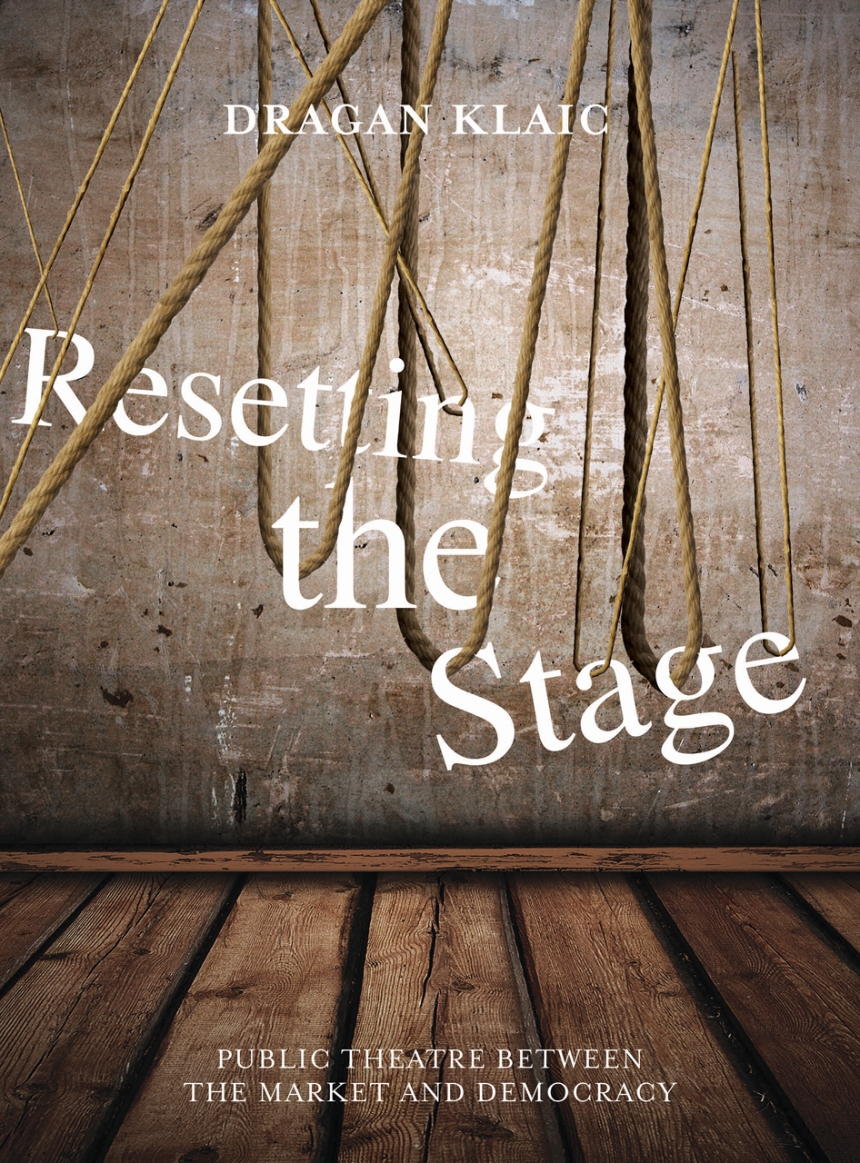Commercial theater is thriving across Europe and the UK, while public theater has suffered under changing patterns of cultural consumption—as well as sharp reductions in government subsidies for the arts. At a time when the rationale behind these subsidies is being widely reexamined, it has never been more important for public theater to demonstrate its continued merit. In Resetting the Stage, Dragan Klaic argues convincingly that, in an increasingly crowded market of cultural goods, public theater is best served not by imitating its much larger commercial counterpart, but by asserting its artistic distinctiveness and the considerable benefit this confers on the public.
Table of Contents
Preface
Acknowledgements
Part I: A Blurred Role
1. Public and Commercial Theatre: Distinct and Enmeshed
The ensemble model
Public subsidies ensure cultural respectability
Crisis—a permanent condition or a discursive image?
A thriving commercial theatre
The specific merits of public theatre
2. Public Theatre: Challenges and Responses
Rising costs, limited compensation
Increasing own income
A minority leisure option
Altered urban demography
Insufficient coping solutions
3. Production Models: Reps, Groups and Production Houses
Repertory theatre: Limitations and adjustments
Repertory companies outlive communism
Groups: An ethos of innovation
Transformation dynamics
4. The Specific Offer of Public Theatre
Making sense of classical drama
Stimulating new playwriting
Post-dramatic theatre
Opera and music theatre: Confronting elitism
Varieties of dance
Theatre for children and young people
Other theatre forms
Part II: Asserting Own Distinction
5. Programming Strategies
A disorienting abundance
Prompting name recognition
Programming in larger templates
6. A Sense of Place
Failed reforms, some accomplishments
A matter of context
Space markers
Big or small?
Newly built or recycled?
Away from the theatre
7. Finding the Audience, Making the Audience
Audiences: Limited, elusive and unstable
Commitment to education
Outreach strategies
Communication: Creating own media outlets
8. Theatre in a Globalised World
The changing role of festivals
International cooperation in the performing arts
An emerging European cultural space
Trans-European vistas
An antidote to complacency
9. Leadership, Governance and Cultural Policy
Leadership: Fantasies of a cultural Superman
Governance matters: Boards safeguarding autonomy
Minima moralia for a public theatre system
Funding: Decision-makers and their criteria
Public theatre and public culture
In Place of an Epilogue: The Prospects for Public Theatre in Europe
Sources
About the Author
Afterword
Acknowledgements
Part I: A Blurred Role
1. Public and Commercial Theatre: Distinct and Enmeshed
The ensemble model
Public subsidies ensure cultural respectability
Crisis—a permanent condition or a discursive image?
A thriving commercial theatre
The specific merits of public theatre
2. Public Theatre: Challenges and Responses
Rising costs, limited compensation
Increasing own income
A minority leisure option
Altered urban demography
Insufficient coping solutions
3. Production Models: Reps, Groups and Production Houses
Repertory theatre: Limitations and adjustments
Repertory companies outlive communism
Groups: An ethos of innovation
Transformation dynamics
4. The Specific Offer of Public Theatre
Making sense of classical drama
Stimulating new playwriting
Post-dramatic theatre
Opera and music theatre: Confronting elitism
Varieties of dance
Theatre for children and young people
Other theatre forms
Part II: Asserting Own Distinction
5. Programming Strategies
A disorienting abundance
Prompting name recognition
Programming in larger templates
6. A Sense of Place
Failed reforms, some accomplishments
A matter of context
Space markers
Big or small?
Newly built or recycled?
Away from the theatre
7. Finding the Audience, Making the Audience
Audiences: Limited, elusive and unstable
Commitment to education
Outreach strategies
Communication: Creating own media outlets
8. Theatre in a Globalised World
The changing role of festivals
International cooperation in the performing arts
An emerging European cultural space
Trans-European vistas
An antidote to complacency
9. Leadership, Governance and Cultural Policy
Leadership: Fantasies of a cultural Superman
Governance matters: Boards safeguarding autonomy
Minima moralia for a public theatre system
Funding: Decision-makers and their criteria
Public theatre and public culture
In Place of an Epilogue: The Prospects for Public Theatre in Europe
Sources
About the Author
Afterword

